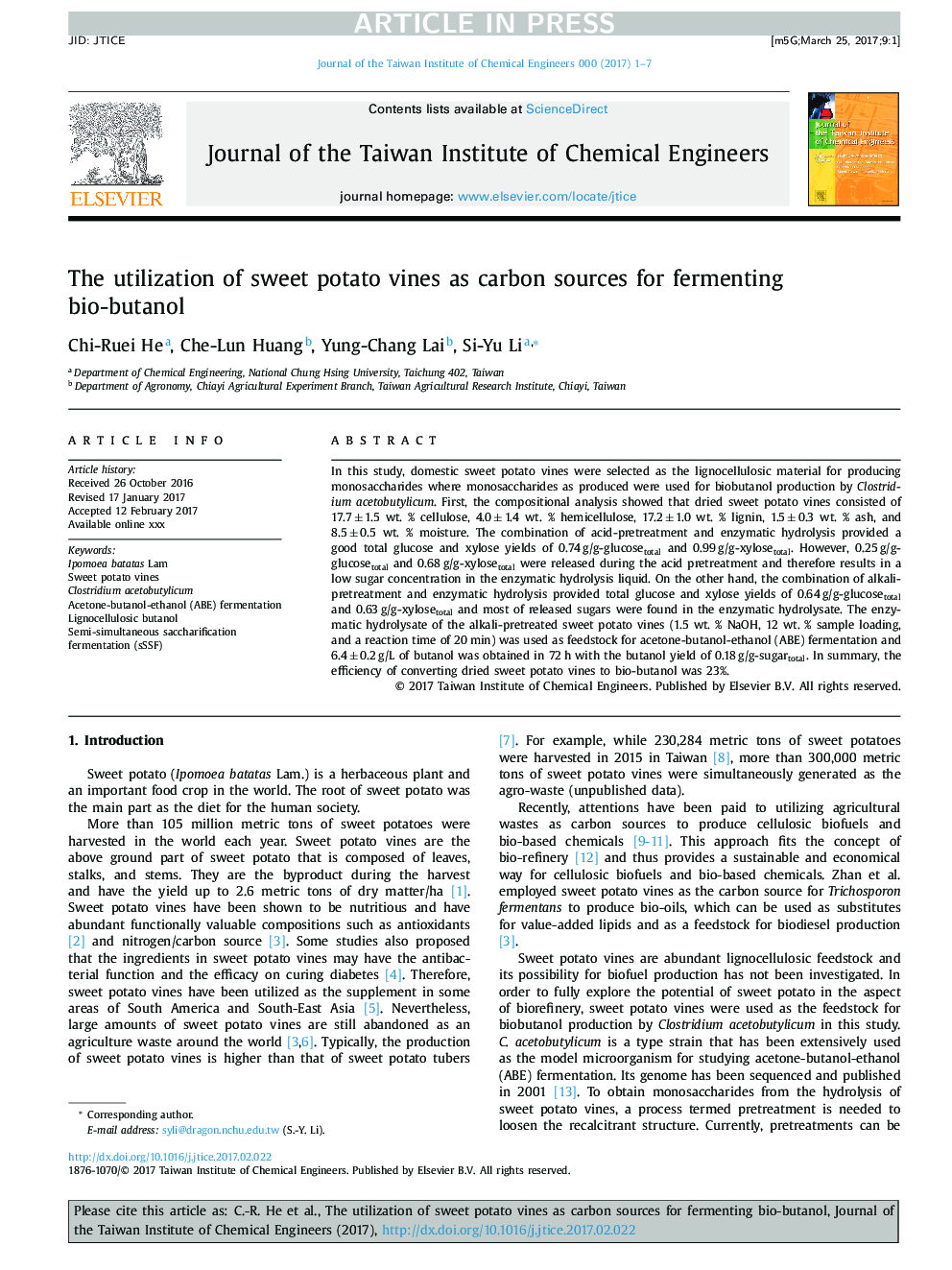| کد مقاله | کد نشریه | سال انتشار | مقاله انگلیسی | نسخه تمام متن |
|---|---|---|---|---|
| 4998530 | 1460395 | 2017 | 7 صفحه PDF | دانلود رایگان |
عنوان انگلیسی مقاله ISI
The utilization of sweet potato vines as carbon sources for fermenting bio-butanol
ترجمه فارسی عنوان
استفاده از انگور سیب زمینی شیرین به عنوان منابع کربن برای تخمیر زیست بوتانول
دانلود مقاله + سفارش ترجمه
دانلود مقاله ISI انگلیسی
رایگان برای ایرانیان
موضوعات مرتبط
مهندسی و علوم پایه
مهندسی شیمی
تکنولوژی و شیمی فرآیندی
چکیده انگلیسی
In this study, domestic sweet potato vines were selected as the lignocellulosic material for producing monosaccharides where monosaccharides as produced were used for biobutanol production by Clostridium acetobutylicum. First, the compositional analysis showed that dried sweet potato vines consisted of 17.7â±â1.5 wt. % cellulose, 4.0â±â1.4 wt. % hemicellulose, 17.2â±â1.0 wt. % lignin, 1.5â±â0.3 wt. % ash, and 8.5â±â0.5 wt. % moisture. The combination of acid-pretreatment and enzymatic hydrolysis provided a good total glucose and xylose yields of 0.74 g/g-glucosetotal and 0.99 g/g-xylosetotal. However, 0.25 g/g-glucosetotal and 0.68 g/g-xylosetotal were released during the acid pretreatment and therefore results in a low sugar concentration in the enzymatic hydrolysis liquid. On the other hand, the combination of alkali-pretreatment and enzymatic hydrolysis provided total glucose and xylose yields of 0.64 g/g-glucosetotal and 0.63 g/g-xylosetotal and most of released sugars were found in the enzymatic hydrolysate. The enzymatic hydrolysate of the alkali-pretreated sweet potato vines (1.5 wt. % NaOH, 12 wt. % sample loading, and a reaction time of 20 min) was used as feedstock for acetone-butanol-ethanol (ABE) fermentation and 6.4â±â0.2 g/L of butanol was obtained in 72 h with the butanol yield of 0.18 g/g-sugartotal. In summary, the efficiency of converting dried sweet potato vines to bio-butanol was 23%.
ناشر
Database: Elsevier - ScienceDirect (ساینس دایرکت)
Journal: Journal of the Taiwan Institute of Chemical Engineers - Volume 79, October 2017, Pages 7-13
Journal: Journal of the Taiwan Institute of Chemical Engineers - Volume 79, October 2017, Pages 7-13
نویسندگان
Chi-Ruei He, Che-Lun Huang, Yung-Chang Lai, Si-Yu Li,
